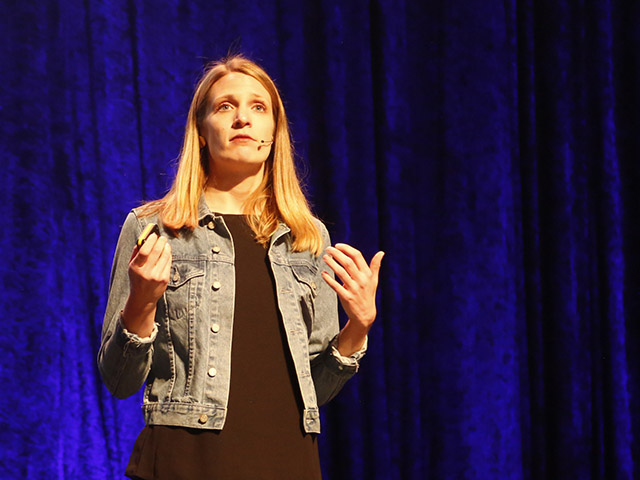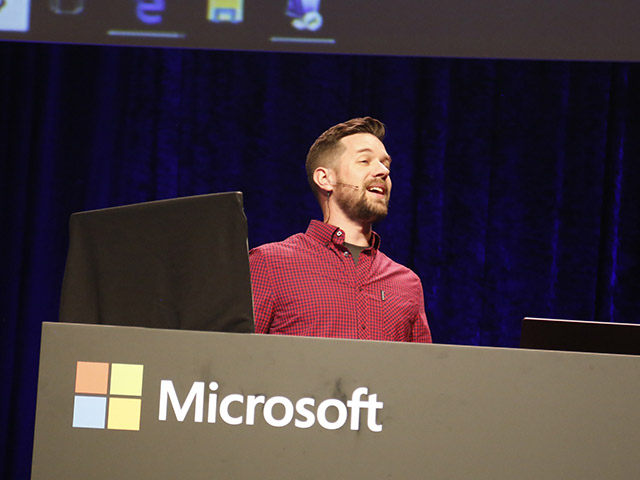Microsoft Tech Summit Part 3: The Right Tools for the Job
By Ryan Noik 19 February 2018 | Categories: feature articles
NEWS SPONSORED BY:
Beyond preparing for transformation and addressing the issue of how to succeed in a digital world by embracing digital workspaces, Microsoft’s Tech Summit, held recently in Cape Town, took a more pragmatically minded turn, honing in on teamwork.
Kim Kischel, the product marketing manager for Microsoft 365 stressed that products that cater for both teamwork and creativity are intended to “unlock the potential of every employee to drive innovation within the organisation.” To do so though, employees need the right software tools that have been built accordingly.
Investing in the future
Although this may seem simple at the outset, baking the functionality into the software offerings is actually quite involved, incorporating the use of AI and machine learning. The purpose of doing so, she explained, is to make it easier for people to create high impact content, automate routine tasks, and search for people and content in highly personalised ways.
The company has also invested in incorporating data visualisation capabilities in order to help people envision information and gain new insights. “For those who don’t love pouring through rows of Excel spreadsheets that take three days to understand, our new features offer immersive experiences to bring data to life,” she continued. Indeed, data visualization – and how data can be reimagined - was one of the Microsoft Research projects that we saw first hand at Microsoft HQ towards the end of 2016.

Kim Kischel, product marketing manager for Microsoft 365
Teamwork explained
Admittedly, teamwork isn’t a new term. Over the past few years it has been touted as an essential skill for working in the 21st century, with Deloitte identifying it as a key soft skill for business success. But what exactly is it, and how does it differ from collaboration?
Kischel explained that while collaboration may or may not result in any measurable value, teamwork entails a shared purpose, a sense of accountability as well as the expectation of a particular outcome.
Additionally, the nature of teamwork itself is often remarkably diverse, from entailing two people to 200, encompassing projects that may run for two days or two years, as well as including both participants within and outside of the company. How then, can it be addressed with software solutions?
No one tool to rule them
Unfortunately, there is no silver bullet. One tool or piece of software that does it all is simply not possible, due to people’s needs being so diverse, she explained. Thus, within the Microsoft 365 suite of tools there is an app for email, messaging, a place for document sharing, and tools for communicating across the organisation, like Townhall. Each of these is essential to successfully working as a team.
The good news is they aren't siloed experiences. Rather, Kischel elaborated that each tool or app is brought together with Microsoft Graph and Office 365 Groups, with users being able to take advantage of a shared identity, membership and common services across the apps, enabling them to seamlessly move across all of the different experiences.
Core to all of the tools mentioned though is Microsoft’s Teams application, which is meant to serve as a digital hub for teamwork. “We see it as a starting point, as a place for people to work together and stay connected. Teams is unique in the sense that it brings together conversation, meeting, files and apps all into one place, and you can leverage more than 150 third party apps to integrate into your teams and experiences,” she enthused.

Ben Walters, senior product marketing manager, Microsoft
Show me
Fostering teamwork and making it easier - it sounds great, but what does it look like in real world terms? As an example, in one of the demos, Microsoft’s senior product marketing manager Ben Walters showed how within Outlook, he could add team members to an email just by entering their name, prefixed by an @ symbol, and the software would search his contacts behind the scenes and add them to his ‘To’ line in his email.
He further addressed the issue of working internationally, with team members who speak different languages. For example, by using Microsoft’s translating services in the cloud, a Powerpoint presentation created in French would be automatically translated to English, with Powerpoint creating a new English presentation.
Furthermore, the software incorporates its translation capabilities to automatically generate appropriate subtitles in up to sixty different languages, so that a non-English speaking audience could understand the presentation.
Alternatively, someone viewing a presentation could point their smartphone at an embedded QR code, and view the subtitles in the language of their choice on their device, with the realtime translation taking place in the cloud. “This makes the idea of communicating globally something that is possible and easy to do,” he enthused.
Beyond a real world look at some of the tools on offer, there was still a deeper dive in Microsoft’s Azure Cloud to come, as well as a closer look at what is needed to invigorate digital transformation. Those topics will be covered next.
Most Read Articles

Have Your Say
What new tech or developments are you most anticipating this year?



.jpg)
